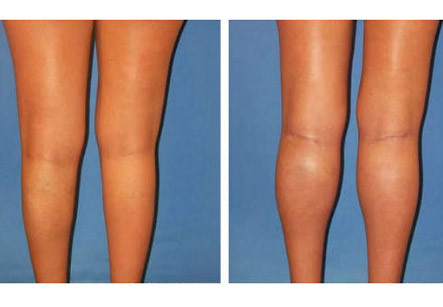Calf Augmentation
Introduction
Calf (calf augmentation) is a procedure to increase or enhance the size and shape of the calf. Many people are dissatisfied with the shape/size of their calf muscles. And the legs are larger parts of the body so they are easily noticeable. Some conscious people may avoid wearing garments that expose their legs. Underdeveloped or thin calves may have negative impact on the self-esteem of the person.
Indications:
Men seek calf augmentation for a bulky and healthy appearance of the calf muscles. In contrast, women generally desire calf implants for a more aesthetic purpose. They want the lower leg to be more proportionate to the shape of their thighs. Bodybuilders are another group seeking calf surgery. Some individuals have high insertion type calf muscles. They have a great difficulty in building calf mass, because of the lack of muscle fibers in the calf area. People with a low insertion type calf muscles can build more mass, the definition accompanying the high insertion type is not there. Calf augmentation can solve both the problems by adding mass as well as definition. Calf surgery can also be used to correct congenital or acquired deformities like polio, club foot, spina bifida.
Calf implant surgery involves inserting a solid, silicone shape into a pocket that overlies the calf muscle

The ability to access the correct proportions, sculpting as well as placing the implant correctly and anticipating the future shape of the calf depends upon the skill of the surgeon. Therefore, a proper choice of surgeon is very important. Generally, a person in good physical condition or good health can be a candidate for calf augmentation.
Procedure:
1. Calf implants enhance the shape and size of the calf muscles by using soft, solid silicone implants placed in pockets overlying the gastrocnemius muscles i.e. the muscle of the calf. These implants can be one for each leg or two depending on the effect required.
2. The legs are measured at a pre-operative visit; the implants of appropriate size are prepared. They are sterilized on a night before surgery.
3. The patient is given general anesthesia and made to lie on the operation table on the stomach i.e. prone position.
4. An incision is made in the fibrous covering over the gastrocnemius muscle called as fascia.
5. A pocket is created between this fascia and underlying muscle. Enough space is made in the pocket for the implant. Bleeding should be minimal while doing this.
6. The implant is then inserted securely in the pocket. The same process is repeated for the second implant.
7. After reversing the anesthesia, the patient is taken to recovery room and monitored for at least half an hour.
Recovery:
1. First there is surgical recovery followed by a long term cosmetic recovery. The surgical recovery includes the first week after surgery, when the patient is advised to walk around slowly. But the legs should be elevated while lying down or sitting to reduce the swelling.
2. At least for a day, a person should stay with the patient to care for him or her.
3. After two days the dressings are removed and the person is encouraged to start more vigorous walking routine.
4. After the first week, the patient starts feeling more comfortable during long walks but the walking is stiff. In the next two or three weeks, normal walking can be resumed comfortably.
5. As the normal walking begins, the skin starts to stretch and loses its shiny appearance. The incisions also begin to fade. One can progress to strenuous activities like weight lifting, bicycling, running within a month or two following the surgery.
Risks:
1. Asymmetry of the legs
2. Shifting of the graft
3. Nerve or muscle damage
4. Excessive bleeding
5. Blood clots
6. Persistent swelling
7. Pain on strenuous activities
8. Infection of the surgical site.
Without complications, a person can be back to full, unrestricted activities within almost two months following the calf augmentation surgery along with the desired aesthetic or functional results.